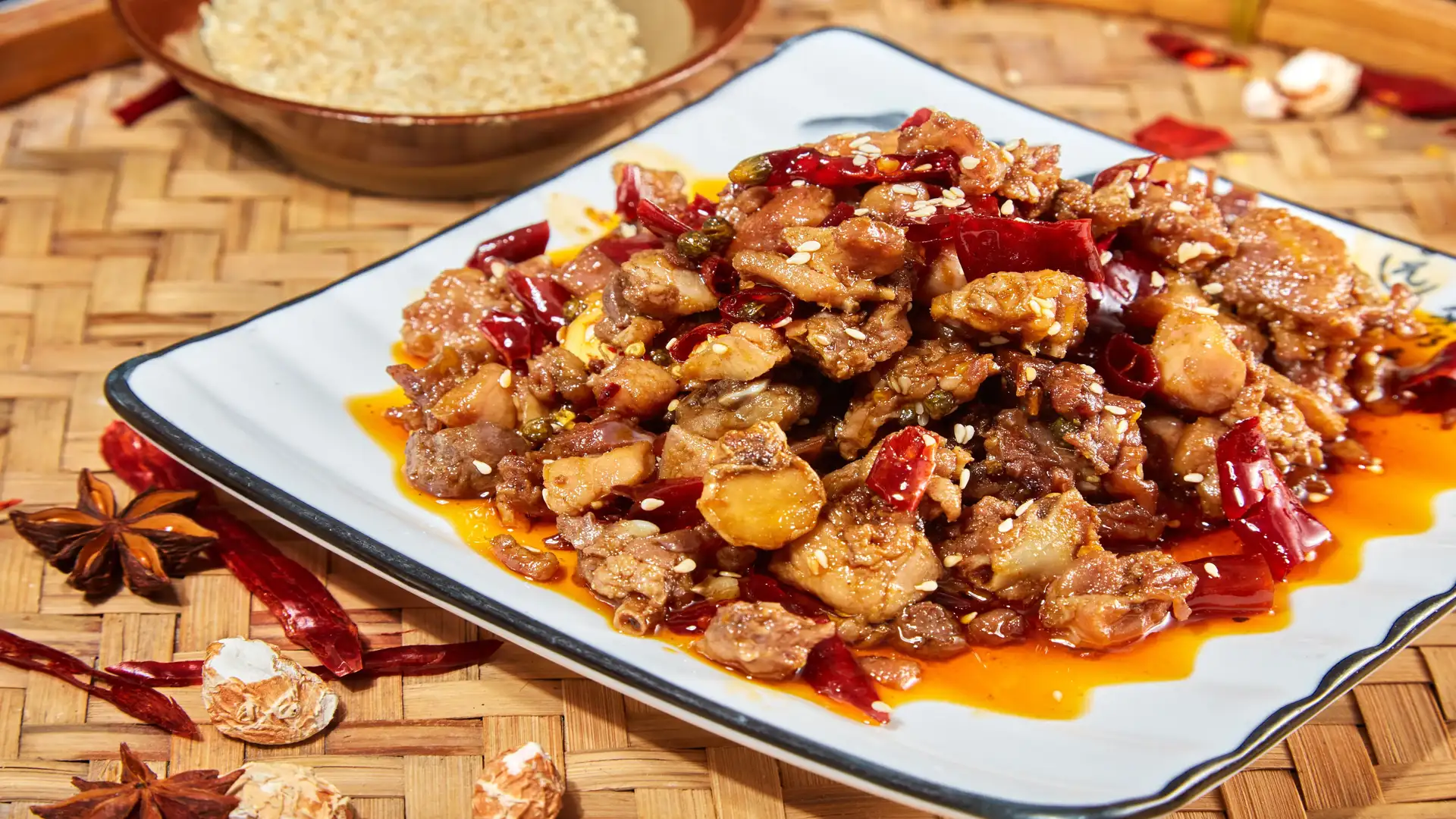The Art of Cold Eaten Rabbit: A Culinary Journey Through Zigong, Sichuan
Introduction:
As a gastronomic practitioner deeply rooted in the rich culinary traditions of Sichuan, I am thrilled to share with you the exquisite delicacy known as Cold Eaten Rabbit from Zigong. This dish is not just a meal, but a cultural emblem that encapsulates the fiery heart of Sichuan cuisine. Let’s delve into the origins, cultural significance, and the meticulous art of crafting this culinary gem.
Origin and Cultural Background:
The origins of Cold Eaten Rabbit can be traced back to the ancient city of Zigong, nestled in the heart of Sichuan province. Known for its salt mines and vibrant culinary scene, Zigong has been a hub for culinary innovation for centuries. The dish itself is a testament to Sichuan’s love for bold flavors and the art of preserving food through traditional methods. It is not just a dish; it’s a story passed down through generations, a narrative of the region’s history, and a celebration of its people’s resilience and creativity.
Ingredients and Preparation:
To create an authentic Cold Eaten Rabbit, one must select the freshest ingredients, each playing a crucial role in the symphony of flavors. The star of the dish is the rabbit meat, sourced from local farms known for their quality and ethical practices. The meat is then marinated for a full 12 hours in a secret blend of Sichuan peppercorns, red chili flakes, ginger, garlic, and a medley of aromatic spices. This lengthy marination period is essential, allowing the flavors to penetrate every fiber of the meat, infusing it with a depth of taste that is both complex and invigorating.
Taste and Texture:
The taste of Cold Eaten Rabbit is a dance of flavors—spicy, savory, and aromatic. The initial burst of heat from the chili is quickly followed by the numbing sensation of Sichuan peppercorns, creating a unique and addictive flavor profile. The tenderness of the rabbit meat, enhanced by the slow marination, melts in your mouth, each bite revealing a new layer of flavor. The dish is a perfect balance of heat and richness, a testament to the skill of the chef in mastering the art of Sichuan cuisine.
Visual Description:
Visually, Cold Eaten Rabbit is a feast for the eyes as much as it is for the palate. The dish is often presented with the rabbit meat cut into bite-sized pieces, arranged artfully on a plate. The deep red of the chili oil contrasts beautifully with the pale, succulent meat, while the scattered Sichuan peppercorns and chili flakes add a pop of color and texture. The dish is often garnished with fresh cilantro and thinly sliced scallions, adding a touch of greenery and a hint of freshness to the otherwise fiery dish.
Representative Dishes and Culinary Features:
In Zigong, Cold Eaten Rabbit is a staple that can be found in many households and restaurants. It is often served as a standalone dish, allowing the focus to be solely on the rabbit meat. However, it can also be incorporated into various other Sichuan dishes, such as stir-fries and hot pots, adding a layer of depth and complexity to the overall flavor profile. The culinary feature that sets this dish apart is its非遗技艺 (intangible cultural heritage) status, which underscores the importance of preserving and passing down the traditional methods of preparation.
Conclusion:
Cold Eaten Rabbit from Zigong is more than just a dish; it is a culinary experience that transports you to the heart of Sichuan. It is a testament to the region’s rich history, its people’s love for bold flavors, and the dedication of its chefs to preserving and perfecting this ancient craft. Whether enjoyed as a standalone dish or as an ingredient in a more complex culinary creation, Cold Eaten Rabbit is a shining example of the beauty and complexity that can be found in the traditional cuisine of Sichuan.
